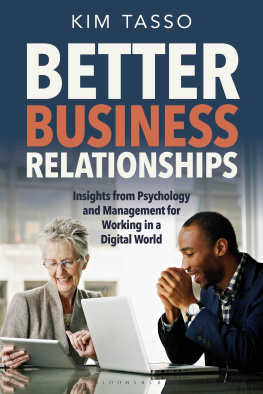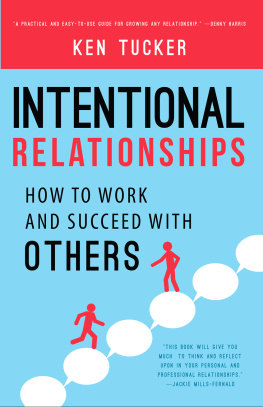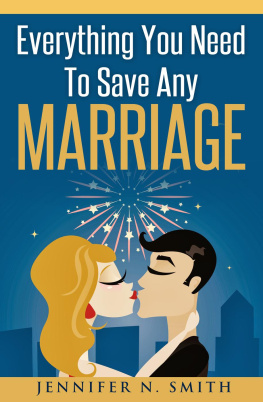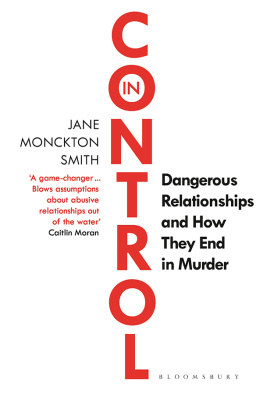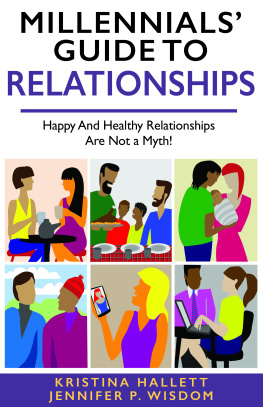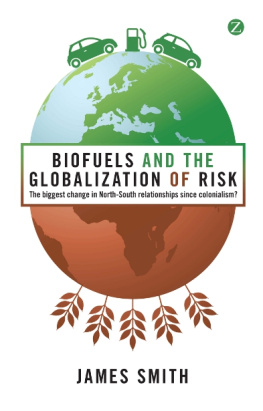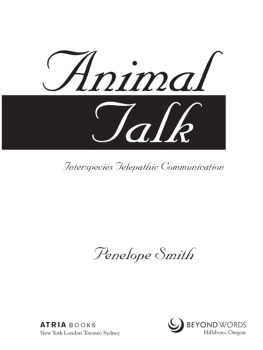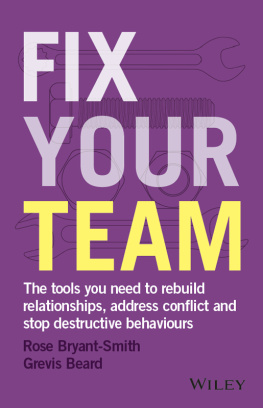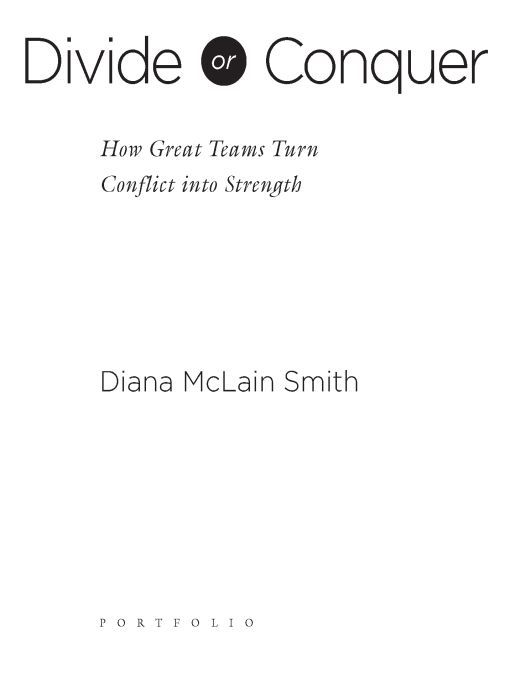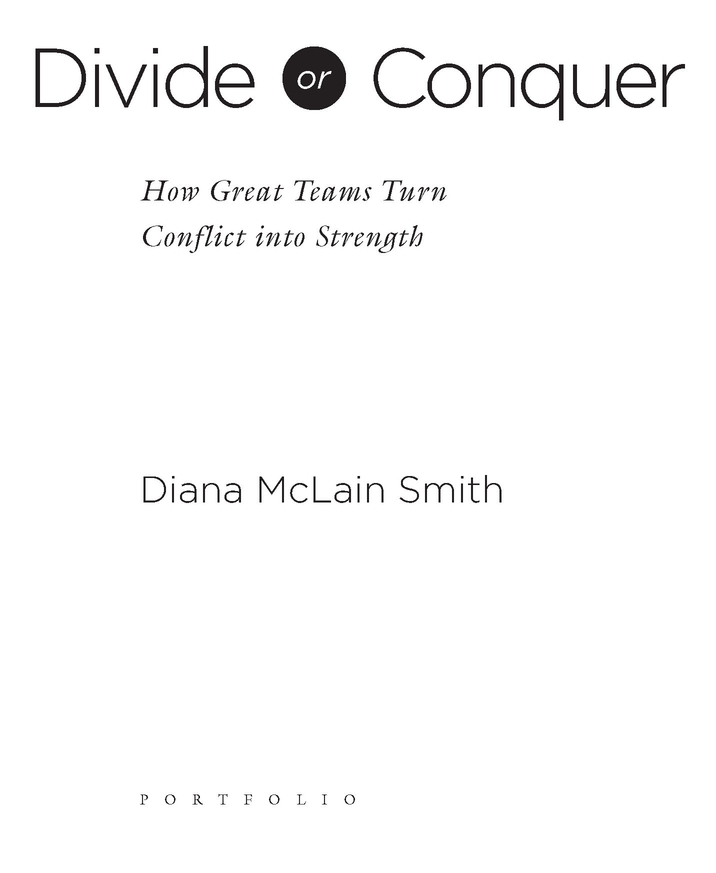Table of Contents
More praise for Divide or Conquer
Divide or Conquer is intelligent, riveting, and useful. Smith reveals a new approach to understanding how management teams work, what can go wrong, and what to do to make it right.
Amy Edmondson, Novartis Professor of Leadership and Management, Harvard Business School
Smith brings a wealth of experience working with leadership teams to understanding and addressing relationships that effect a companys success. Her account of Abraham Lincoln gives the inspiration, insights, and tools leaders need to take their teams to a new level of performance.
Stephen N. Kahane, MD, MS, CEO and Chairman, AMICAS, Inc.
One of the best books available on building a new team or regenerating an old one. Beautifully written.
Chris Argyris, James Bryant Conant Professor, Harvard Business School
This book can save your sanity... The cases are terrifically instructive. It helps to learn how even the brilliant can be blinded and mess up!
Susan Perrine, MD, Chief Scientific Office and Vice President, Clinical Affairs, HemaQuest Pharmaceuticals Inc.
Smith is legend among Bostons social entrepreneurs for her insights into the sometimes thrilling, sometimes dysfunctional human relationships that are at the heart of any enterprise. In Divide or Conquer, Smith has put together in one accessible volume her vast intelligence about the usually unspoken, informal dimensions to relationships among leadersand the ways these bonds can either sabotage or accelerate the success of an organization. I plan to share this book with all of our senior leaders at Citizen Schools.
Eric Schwarz, President and CEO, Citizen Schools
Smith shows us how to salvage struggling relationships or turn good relatinships into great ones. Extraordinarily insightful and refreshingly new.
Vanessa Kirsch, President and Founder, New Profit Inc.
All leaders should keep a copy of this book handy. Using in-depth case studies, it shows you how to strengthen relationships and ensure good decision making.
Ralph Biggadike, Professor, Columbia University, Graduate Business School
Diana Smiths book reveals how relationships at the top can create winning performances or topple even the greatest organizations. Through clear, concise, and witty writing, she offers great hope by showing how our most important relationships can be changed and improved.
Johann Koss, Four-time Olympic Gold Medalist; President and CEO, Right to Play International
To my husband, Bruce Patton
For everything
Preface
A house divided against itself cannot stand.
Abraham Lincoln
All teams rise and fall on the strength of their relationships. Secretary of Defense Donald Rumsfeld and his top generals; Larry Summers and the faculty at Harvard University; Carly Fiorina and the Hewlett-Packard board; Michael Ovitz and Michael Eisner at Disney; Steve Jobs and John Sculley at Apple; Abraham Lincoln and his wartime cabinet: as far back as Agamemnon and Achilles on the beaches of Troy, relationships within teams have determined the fate of leaders and their enterprises.
Even so, relationships go largely unnoticed. We analyze group dynamics; we size up team members; we even consider the larger context within which teams operate. But we dont take a close look at the relationships that turn a bunch of people into a single team.
No one today would dispute the idea that relationships matter. Flatter hierarchies, tighter interdependencies, efforts to move decision making down in organizations all depend on the quality of peoples relationships. Yet despite their obvious importanceperhaps because of itrelationships remain largely a mystery. We know that relationships matter, but not exactly why or how. And so, despite our best efforts to create collaborative, high-performing teams or flatter, more flexible organizations, many still look as territorial and hierarchical as ever.
In this book, I use stories from my own work and public sources to bring relationships to the foreground and peer inside them, so you can better understand how they work, develop, and changeand then use that understanding to build relationships flexible and strong enough to create and sustain an exceptional team.
There are these two fish swimming along, and they happen to meet an older fish swimming the other way, who nods at them and says, Morning, boys, hows the water? And the two young fish swim on for a bit, and then eventually one of them looks over at the other and goes, What the hell is water?
David Foster Wallace, The Capital T Truth
Introduction
Every team is only as strong as its weakest relationships. How well and how quickly teams make decisions, inspire innovation, tackle performance problems, or learn from mistakes depends on the strength of relationships within a team. Some relationships give teams the courage to face tough truths and make bold changes. Others kill every new idea or initiative within their reach. Still others plod along somewhere in between, causing little trouble but failing to inspire or sustain stellar performance. Without a doubt, individuals and group dynamics figure in all this, but all that figuring takes place in the context of relationships.
After 20 years of studying and advising leaders, Ive come to believe that a teams performance, even a firms, turns on the quality of its most important relationships.
The Real Sticking Point
In retrospect, this conclusion was inescapable. On many occasions Id witnessed organizations falternot because leaders failed to grasp the need to change or to design the right strategy or to inspire the troops or to appreciate the importance of culture, but because relationships within their teams prevented them from doing what they needed to do to succeed.
Though Id long suspected this, the top team at Elite Systems convinced me. Touted by the press as one of Americas great manufacturing firms, Elites performance first stalled, then plummeted after competitors entered the market with knockoff products at much lower prices. Two years later, the firms top team faced choices so fundamental they challenged its most basic beliefs and threatened its identity as a leader in product design. Quite understandably, the executives struggled.
As consultants to the team, my partner and I figured we could best help by gathering data on politically charged strategic questions, facilitating team deliberations, and developing peoples knowledge of strategy, team dynamics, and negotiation. After a year and a half, I think its fair to say we failed. Despite everyones hard work and best efforts, the team couldnt move quickly enough to turn around the firms performance. In the end, the board felt it had no choice but to take action, and it did, firing the CEO and half his team. Needless to say, my partner and I went out with them, as we should have.
Its the Relationship, Stupid!
Afterward, I decided to take a closer look at what had prevented the team from moving fast enough to improve Elites performance. As I pored over transcripts from over 50 meetings, tape-recorded over 18 months, I began to see the basic flaw in our approach. We were so intent on building the team, facilitating decision making, and developing individual leaders that we completely overlooked the real sticking point: relationships within the team.


